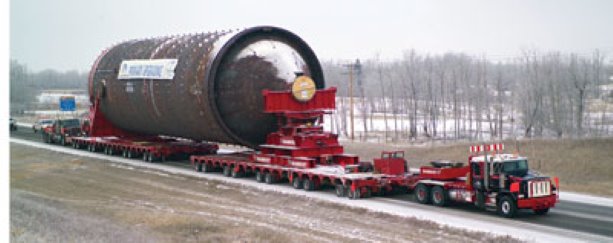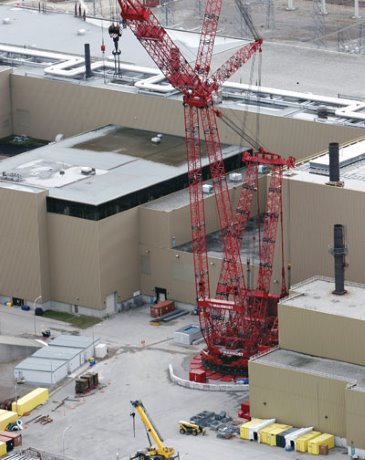A crest that includes a mammoth decorates the bright red hard hats and coveralls of the men who work for Mammoet, the Dutch company that specializes in heavy lifting and transportation.
Innovation
Dutch company specializes in heavy lifting and transportation.
CAMBRIDGE, ON
A crest that includes a mammoth decorates the bright red hard hats and coveralls of the men who work for Mammoet, the Dutch company that specializes in heavy lifting and transportation.
Mammoet is the Dutch word for mammoth, ancestor of modern elephants that roamed much of the earth for millions of years. They were big. Some specimens reached five metres at the shoulder and weighed six to eight tonnes.
Their remains have been found in North America, Europe, Africa and Asia — pretty well everywhere you’ll find Mammoet’s men and equipment at work, lifting new bridges into place, hauling oilfield equipment, lifting and hauling the big stuff — mammoth stuff — wherever and whatever it may be.
The grey mammoth on the red coveralls was in Ottawa in August, taking out two expressway bridges, then lifting and hauling pre-built spans into place.
The work was done by Mammoet Canada Eastern Ltd., part of the company’s worldwide network. In eastern Canada, most the company’s work is on power plants, says Glen Aitken, vice-president of sales. In Alberta, the work is in the oil sands.
In fact, Aitken said “98 per cent of what we do around the world is in the oil and gas sector. It’s the root of our business.”
The Ottawa bridge job was the first in Canada to use rapid replacement technology to replace highway bridges, although it won’t be the last. In Ottawa alone at least three other overpasses will be replaced.
The first bridge job involved two self-propelled modular transports — immense machines each capable of lifting the old structures off their piers and transporting them to a nearby park being used as a temporary construction yard.
Transporters then picked up the new decks that were built, and, one at a time, slipped them into place. It took about 18 hours.
But the company does even more spectacular work. For example, it used strand jacks to lift an entire new roof onto a soccer stadium in Düsseldorf, Germany, then repeated the performance to place a roof on a football stadium in Phoenix, Arizona.
“And we also just did the Olympic stadium in Beijing,” Aitken said. “That one was a crane project. It doesn’t have a full roof, but it certainly had a lot of big pieces that had to go up to a huge height.”
Lifting entire roofs is becoming a bit more common, he said, because it’s easier to build it at ground level “instead of using all kinds of tower cranes or mobile cranes with huge booms and working at those heights.”
Most strand jacks have a 1,000-tonne capacity, he said, so it you’re lifting a 10,000-tonne roof, you would have 10 or 12 jacks on the job. A lighter roof would mean fewer jacks.
Because of differences from job to job, some of Mammoet’s equipment is modular. The self-propelled transporters can vary in size and format.
The company is also doing hauling and heavy lifting during the refurbishment of the Bruce nuclear plant on Lake Huron.
Mammoet is delivering them, Aitken said, and while “not all that big by nuclear standards, they’re still a good-sized load to haul down the road.” At the plant, they are lifted into place by a big crane “rated at around 1,800 tonnes.”
The oil sands work involves lifting and moving large elements like pressure vessels. Some are fabricated in the Far East and move by ship then loaded onto special rail cars for the trip to Fort McMurray, Alberta. There, Mammoet picks them off the cars and takes them to the project.
Even heavier vessels are fabricated at immense shops in Edmonton, then hauled 700 kilometres northeast to the oil sands.
“Around Fort McMurray all the highways are designed with heavy transportation in mind, so the bridges are capable of supporting enormous weight, so we can move huge vehicles down the road there,” Aiken said.

This is what it looks like when Mammoet hits the road with large vessels, in this case, a coker. The highways to and around the Alberta oil sands were constructed with such loads in mind.











Recent Comments
comments for this post are closed